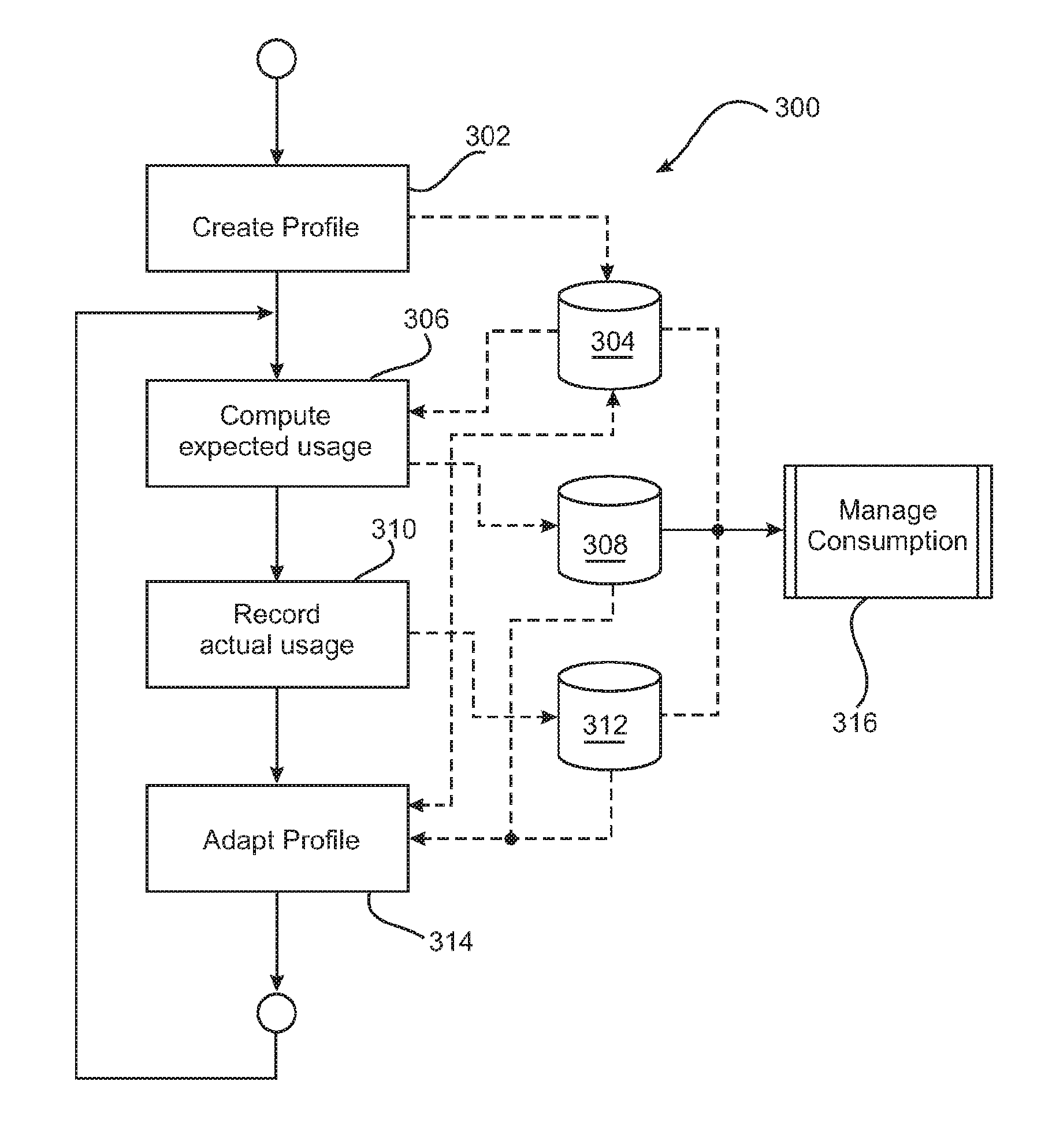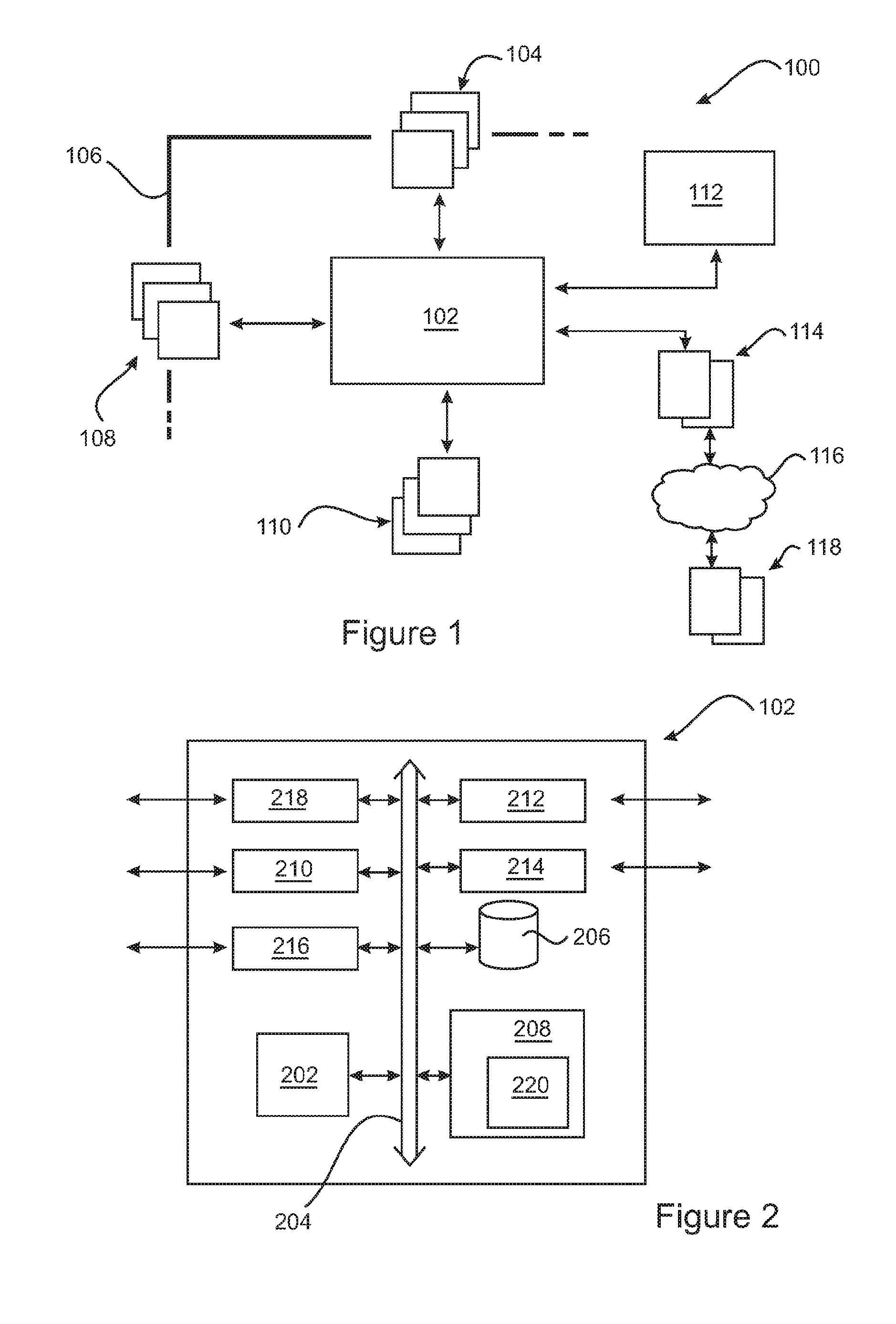Method and system for energy management
a technology of energy management and energy consumption, applied in the field of energy management, can solve the problems of increasing the cost of energy production and consumption, difficult to achieve in the absence of detailed energy consumption metrics, increasing energy consumption in homes and offices, etc., to achieve accurate computation of expected energy consumption, facilitate customised management of energy consumption associated, and achieve the effect of setting and/or efficiency of heating
- Summary
- Abstract
- Description
- Claims
- Application Information
AI Technical Summary
Benefits of technology
Problems solved by technology
Method used
Image
Examples
example 1
Heating / Cooling
[0099]In this example, the contents and use of a profile for a domestic residence will be discussed, in relation to the management of heating and cooling facilities.
[0100]Information required in the initial profile for the domestic residence may include:[0101]relevant sizes of the residence and / or individual rooms;[0102]information relating to the type and characteristics of heating and cooling appliances located at the residence;[0103]location information of the residence, which may be linked to climate information (either pre-loaded or downloaded via the Internet), and which may be regularly updated using local forecast and observation data; and[0104]typical resident home and away times (on a daily and weekly basis, bearing in mind that weekdays and weekends will normally have different parameters).
[0105]Optionally, though not essentially, the controller for the domestic residence may have access to a sensor and / or thermostat providing internal temperature data in r...
example 2
Household Appliances
[0116]In this example, the potential savings achieved by reducing standby power are considered.
[0117]An initial profile may include (eg in addition to other information associated with heating and cooling, and other aspects of energy consumption) the following:[0118]size of rooms and / or house, and the number and relevant demographic details of the occupants (which may be indicative of likely usage of different types of appliance);[0119]a list of typical devices / appliances that may be present and in use within the residence, along with known and / or inferred characteristics of such devices; and[0120]typical resident's home and away times (different for weekdays and weekends).
[0121]Predicted energy consumption is performed in a similar manner to the heating / cooling in Example 1 above, ie based upon resident occupancy times, and the relevant characteristics of the various devices and appliances associated with the residence.
[0122]It should be noted, however, that not...
example 3
Office Occupancy
[0127]This example relates to the management of power consumption in an office environment.
[0128]In this example, an initial profile is based upon a typical expected occupancy time (expected change-of-state time frame) between 8:30 am to 5:30 pm.
[0129]For adaptation on the profile, changes (ie gradients or slopes in the actual usage data) within the corresponding surrounding periods of 7:30 am to 9:30 am, and 4:30 pm to 6:30 pm are analysed in detail or given more weight. Advantageously, analysis frequency / resolution at other times may be reduced thereby reducing the computational load. (It is noted that a similar analysis approach may be adopted for domestic residences, taking into account the different occupancy times as discussed in Examples 1 and 2.)
[0130]In accordance with preferred parameters of the profile, the average standby consumption (AvStandby) is computed over the period between 12.00 am and 4.00 am. Preferably this is computed for each tenant, and also...
PUM
 Login to View More
Login to View More Abstract
Description
Claims
Application Information
 Login to View More
Login to View More - R&D
- Intellectual Property
- Life Sciences
- Materials
- Tech Scout
- Unparalleled Data Quality
- Higher Quality Content
- 60% Fewer Hallucinations
Browse by: Latest US Patents, China's latest patents, Technical Efficacy Thesaurus, Application Domain, Technology Topic, Popular Technical Reports.
© 2025 PatSnap. All rights reserved.Legal|Privacy policy|Modern Slavery Act Transparency Statement|Sitemap|About US| Contact US: help@patsnap.com



